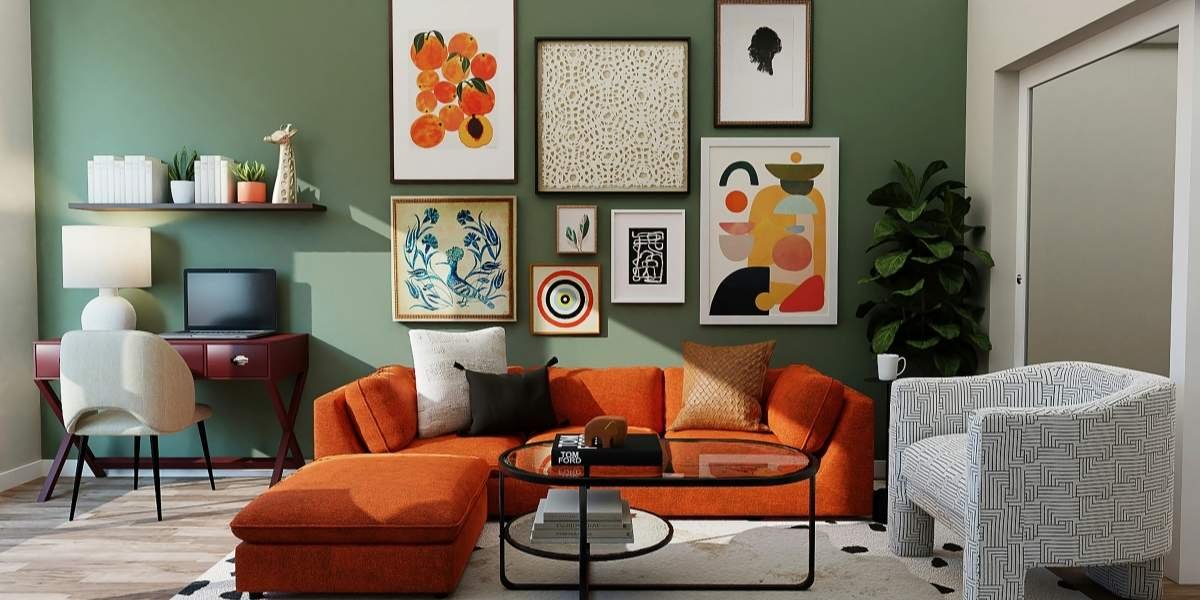Dopamine decor is gaining attention as more people look for ways to make their homes feel happier, brighter, and more personal. It’s not just about adding color for the sake of style. This interior design trend is rooted in the idea that surroundings can influence mood, and that decorating with intention can help support mental health. For those who’ve felt drained by neutral tones or uninspired by minimalist spaces, dopamine decor offers a refreshing alternative.
The concept is simple: create a space that sparks joy. That might mean layering bold colors, mixing patterns, or incorporating playful objects that bring back good memories. It’s not about following strict design rules. It’s about tuning into what feels good and letting that guide the choices.
What Defines Dopamine Decor
At its core, dopamine decor is about stimulating the senses in a way that feels uplifting. This can be achieved through vibrant colors, unexpected textures, and nostalgic elements. Think of a room painted in bright coral, filled with velvet cushions, vintage lamps, and quirky art. It might sound chaotic, but when done thoughtfully, it creates a space that feels alive and comforting.
This style stands in contrast to the muted palettes that have dominated interiors for years. Beige, gray, and greige may feel calming to some, but for others, they lack energy. Dopamine decor responds to that by embracing color psychology. Warm tones like orange and yellow can energize a room, while cooler shades like turquoise and lavender offer a sense of calm. The goal isn’t to overwhelm, but to balance stimulation with harmony.
Textures play a role too. Soft fabrics, glossy surfaces, and tactile materials invite interaction and add depth. Even lighting can contribute, with warm bulbs and natural light helping to create a cozy, welcoming atmosphere. The idea is to make every element of the room contribute to a sense of well-being.
Why It Matters for Mental Health
The connection between environment and mental health is well established. Spaces that feel sterile or impersonal can contribute to stress or low mood. On the other hand, environments that reflect personal taste and evoke positive emotions can help people feel more grounded and content.
Dopamine decor taps into this by encouraging people to surround themselves with things that make them feel good. That might be a favorite color, a childhood keepsake, or a piece of art that sparks imagination. These choices aren’t just decorative. They’re emotional anchors that help create a sense of safety and joy.
For those dealing with anxiety, depression, or burnout, having a space that feels comforting can make a real difference. It’s not a cure, but it’s a supportive tool. Even small changes, like swapping out a neutral rug for a patterned one, or adding a colorful throw pillow, can shift the mood of a room and, by extension, the person in it.
There’s also something empowering about taking control of a space. Making design choices based on personal preference rather than trends can help build confidence and reinforce identity. It’s a way of saying, “This is what makes me happy,” and letting that guide the environment.
How to Approach Dopamine Decor Thoughtfully
While dopamine decor encourages bold choices, it’s not about throwing everything together without a plan. The most successful spaces are those where colors, patterns, and textures work together. That doesn’t mean everything has to match, but there should be a sense of cohesion.

One way to start is by identifying a few key elements that bring joy. That could be a favorite color, a cherished object, or a style that feels nostalgic. From there, build around those pieces, adding complementary items that enhance the overall mood. It’s helpful to think about scale and proportion too. A large, colorful sofa might be balanced by smaller, neutral accents. A gallery wall of playful prints can be grounded by simple furniture.
It’s also worth considering how each room is used. A bedroom might benefit from softer tones and cozy textures, while a kitchen or living room could handle more vibrant energy. The goal is to create spaces that support the activities and emotions tied to them.
For those unsure where to begin, starting small can help. Try adding a colorful lamp, a patterned rug, or a few bright accessories. See how those changes feel before committing to a full redesign. The process should be enjoyable, not stressful.
The Broader Appeal of Dopamine Decor
Part of what makes dopamine decor so appealing is its flexibility. It’s not tied to a specific era or style. It can be retro, modern, eclectic, or anything in between. What matters is that it reflects the person living in the space.
This trend also aligns with a broader shift toward personalization in design. People are moving away from cookie-cutter interiors and embracing individuality. That might mean mixing vintage finds with new pieces, or combining high-end items with thrifted treasures. It’s about creating a space that feels authentic and expressive.
Social media has played a role in spreading the trend. Platforms filled with colorful interiors and creative styling have inspired people to experiment and share their own versions. While not everyone wants a neon pink living room, seeing others embrace bold choices can be encouraging.
For those who’ve felt stuck in a design rut or overwhelmed by traditional rules, dopamine decor offers a way forward. It’s a reminder that homes don’t have to be perfect, they just have to feel good. And sometimes, that means letting go of expectations and choosing joy instead.







